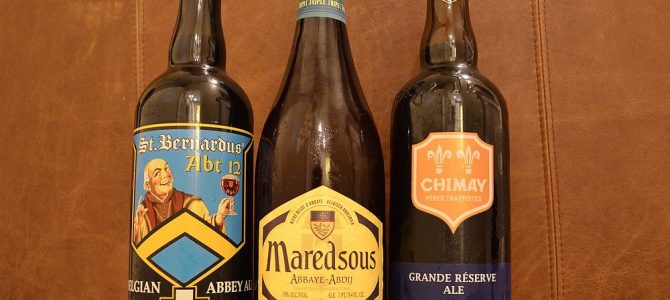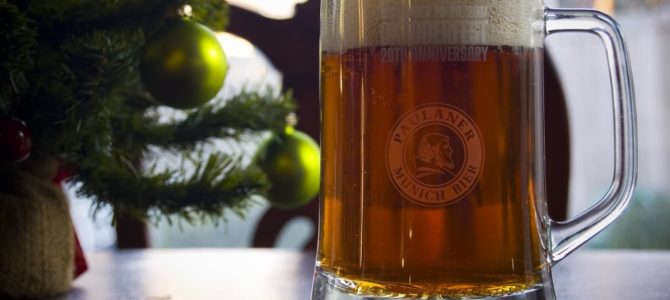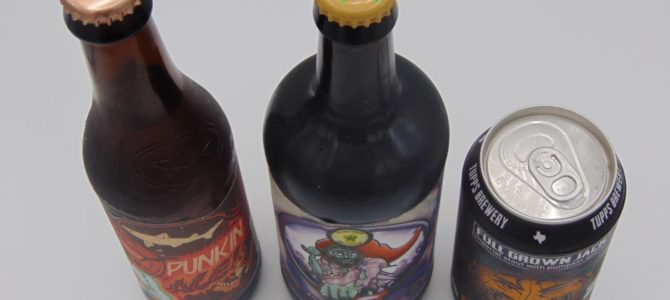When you think of a monk, you may picture a lonely, chubby guy with a mostly bald head who chants, sings, and prays most of his day. A monk seems absolutely detached from society, focused on his scholarship and worship of God. What you may be missing is the amazing contribution monks have made to the history of beer.
Fellow Federalist writer Neal Dewing, erstwhile author of the wonderful Weekend Cocktail column, wrote an article in 2014 about a relative of mine who was an abbot in southern England in the early 1900s. He helped rebuild a church and is a prominent figure in Catholic scholarship whose works are still taught in Catholic schools today. (Seriously, you can buy his books on Amazon.) Buckfast Abbey, his home, is known today for a tonic wine they produce. Some monks produced wine (it is a central part of Catholic Church after all), but others produced beer.
Some people who are long-time beer aficionados, guys who would hate the term “aficionados,” say monks brew some of the best beer in the world. I’m not kidding.
What Makes A Monkish Beer
In the first few years of our twenty-first century, the folks at RateBeer.com recognized the Trappist monks at The Abbey of Saint Sixtus of Westvleteren, Belgium, as the brewers of the best beer in the world. Their dark, quadruple-style 12 earned them recognition they never could have expected. The monks who brew only 4,000 barrels of beer a year were suddenly catapulted to the top of the beer world, a position none of them expected, or even really wanted.
The Westvleteren monks produce one of only 12 beers in the world that are allowed to carry the “Trappist” name. These brewers must all adhere to three strict rules.
- The beer must be brewed within the walls of a Trappist monastery, either by the monks themselves or under their supervision.
- The brewery must be of secondary importance within the monastery and it should witness to the business practices proper to a monastic way of life.
- The brewery is not intended to be a profit-making venture. The income covers the living expenses of the monks and the maintenance of the buildings and grounds. Whatever remains is donated to charity for social work and to help persons in need.
Perhaps the most well-known and widely available of the Trappist beers is Chimay, from Belgium. They make several beers, from a light blonde to a dark, deep, creamy brown beer packed full of complex aromas and flavors that make it a real pleasure to drink. These are beers monks have brewed for themselves or the local community for hundreds of years.
With the advent of modern distribution technology, marketing, and a booming worldwide beer culture, what used to be obscure beers brewed by lonely monks in a random abbey in Europe became famous beers you can buy in establishments from London to Los Angeles and Paris to Dallas.
These Trappist brews are a specific subset of “Abbey beers,” which, as the name implies, generally have an association with a current or former monastery, or are brewed in the style associated with monastic beers. These ranges from dubbels and tripels to quadrupels, and more. It can be an intimidating thing to consider as you stand in front of the beer aisle at your local grocery or liquor store, but give them a try.
Oh, and these are beers best enjoyed with some hefty, stinky, gooey cheese. In fact, in the course of writing this article, I made a midnight snack of a stinky cheese sandwich to pair with the Chimay Grande Reserve Ale I was enjoying. Luckily, neither of my young children nor my wife woke up to the smell of the perfect, and I mean perfect, cheese sandwich. But that’s another column for another time.
Next time you’re looking for a good beer, enjoy one blessed by God himself, and get ready because Oktoberfest is just around the corner, and it’s the ultimate beer holiday. Cheers.









